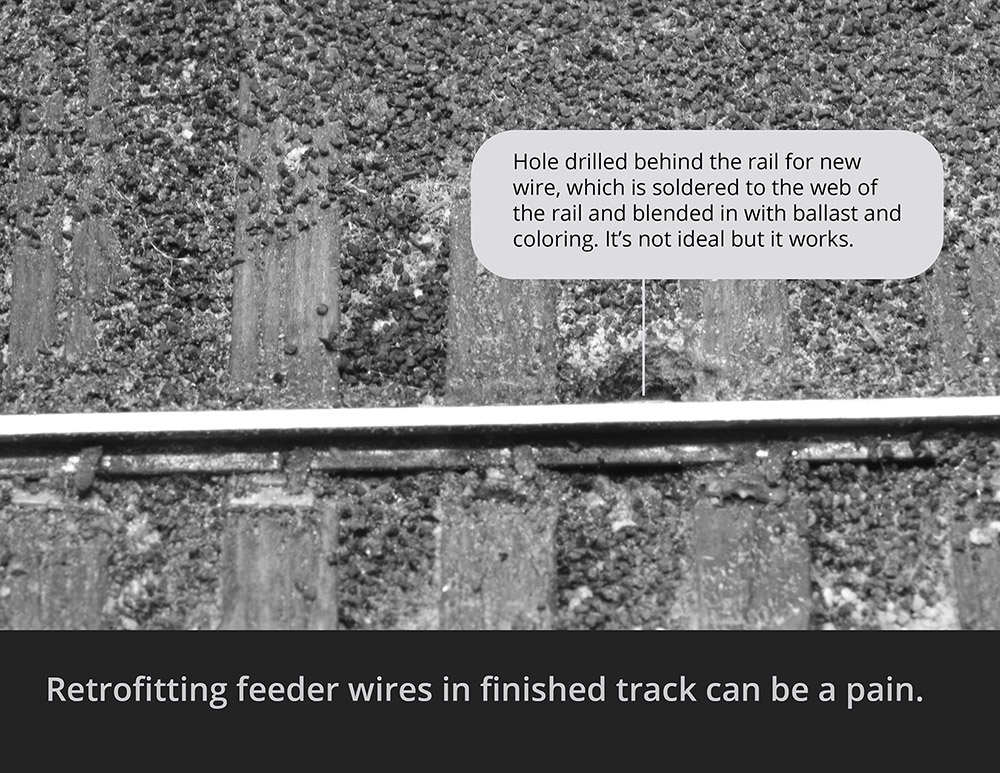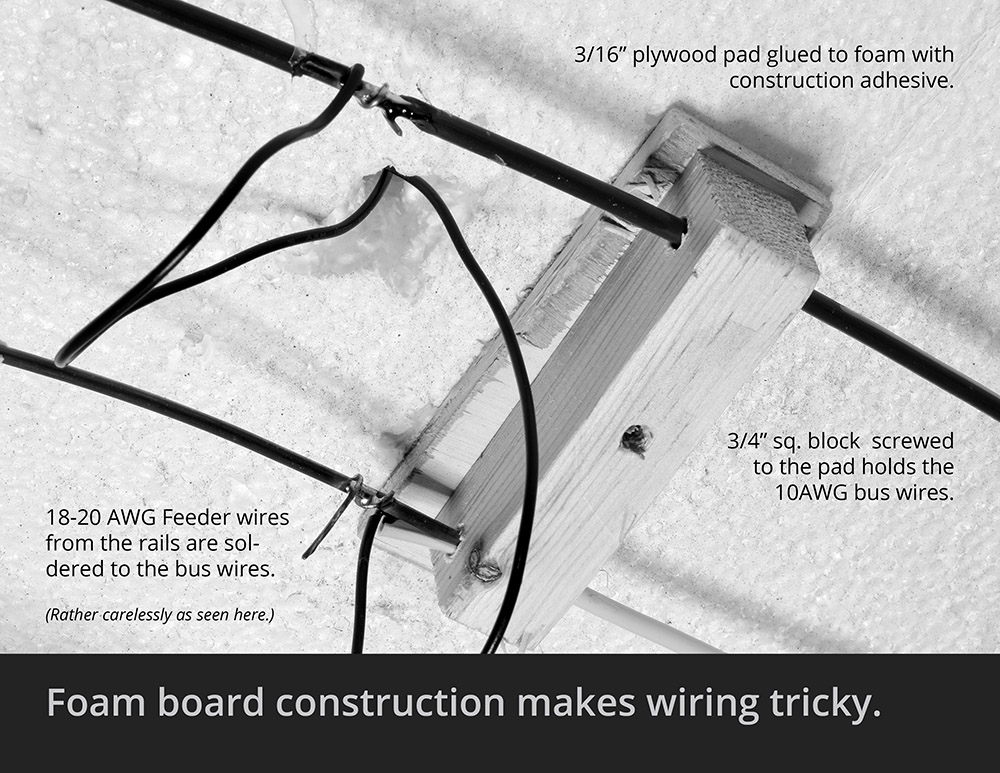Retrofitting feeder wires to existing track isn’t my idea of a good time. However, it’s a necessary step if I want a functioning layout.
When I dismantled the Indiana and Whitewater, I just wanted the job over and the mess cleaned up. At the time I didn’t know if I would ever build another layout, so I wasn’t that careful in salvaging things. If a section of track and roadbed came up intact fine, if not, I didn’t sweat it. As a result, I cut the old feeder wires without any concern about reusing things.
Mill Road is built around a pair of turnouts that came up cleanly, yet is missing a number of wiring connections. I had to extend the track on each end of this section and added new feeder wires as needed before ballasting. For completed track it’s another story. Here, I have to drill a hole and solder the wire to rail that is painted and often buried in ballast. If that doesn’t sound like enough fun, I also don’t want to see these wires.

Once the new wiring was run, I hooked up temporary power and spent a ridiculous amount of time enjoying the locomotive moving back and forth like a lazy ping pong ball.

At this stage in the craft, I want the simplest systems possible. Operations on Mill Road consist of a single locomotive and handful of cars, so even though I have a DCC system, it seems like overkill. Furthermore, I’m not that great a fan of sound effects or installing and programming decoders. I enjoy sound but can easily get along without it. This leaves me with an old school solution that fits my needs: a simple, stationary power pack positioned by the lone turnout and grade crossing. If I do decide to complicate my life in the future, the layout is prewired and ready to go. For now though, it’s been too long since something moved under its own power.
Regards,
Mike
0 Comments